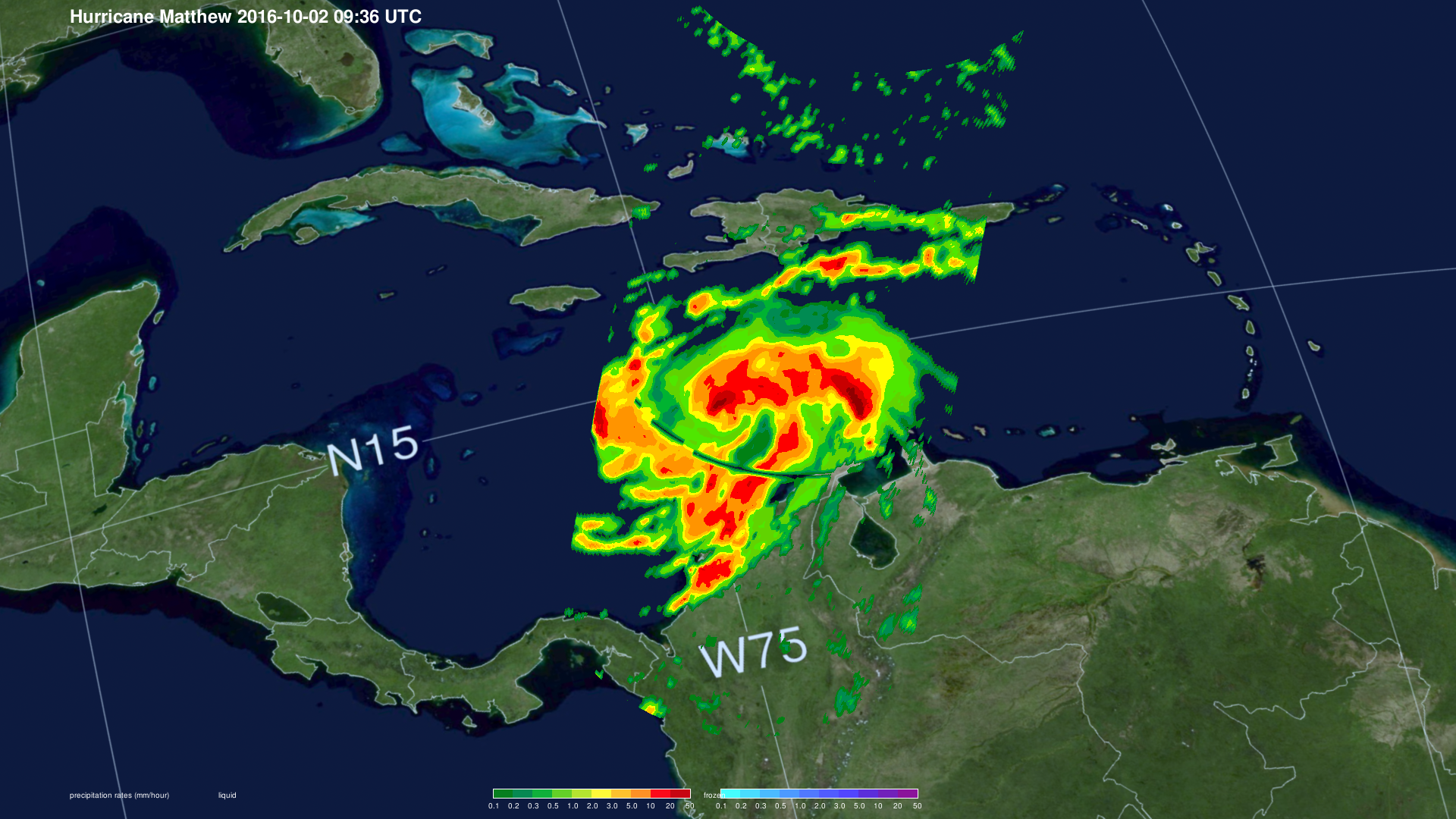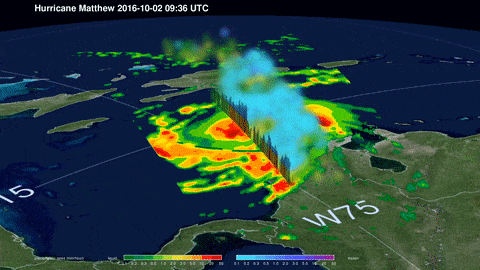GPM Sees Hurricane Matthew Producing Dangerous Rainfall
The GPM core observatory satellite passed above hurricane Matthew on October 2, 2016 at 5:46 AM EDT (0946 UTC). GPM’s Microwave Imager (GMI) and Dual-Frequency Precipitation Radar (DPR) instruments collected data that were used in the rainfall map shown here. GPM found that very heavy rainfall was located around Matthew. Rain was revealed by GPM falling at a rate of over 6.4 inches (163 mm) in some areas near hurricane Matthew. Of particular interest is an area of very heavy rain located well to the east of Hurricane Matthew’s center. This blob of strong convective storms has been persistent over the past few days. This area of intense rainfall is due to convergence between the trade winds (prevailing easterlies) and the wind flow from the south with Matthew. This area of heavy rainfall with Matthew may cause devastating torrential rainfall as it moves slowly over Haiti. Up to 40 inches (1016 mm) of rainfall have been predicted over Haiti!
A 3-D depiction of storm tops was derived from GPM’s radar (DPR Ku Band) that shows the area east of Hurricane Matthew’s eye. Several storms in the area had tops that were measured by DPR reaching heights above 9.9 miles (16 km).
GPM is a joint mission between NASA and the Japanese space agency JAXA.



